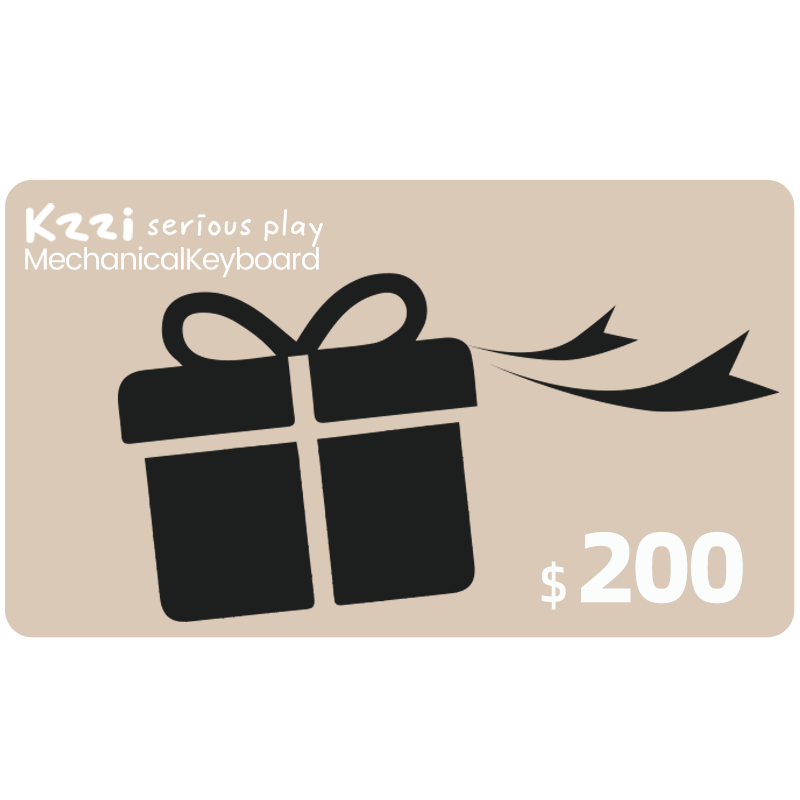As we talked before, keycap can be included as one of the important part when shopping for a new mechanical keyboard. Keyboard keycap profile and material does not only affect the keyboard appearance, but also the typing feeling, typing sound, and the keycap durability.
We will introduce the keycap profile in the another blog, here we mainly focus on the keycap material. Among all the material in the market, ABS keycap and PBT keycap can be the most common option. Other metals like wood, POM, PC, PVC, resin can also be found in the artisan keycaps.
If you're not sure which one is right for you, this guide breaks down the differences between keycap material, pros and cons, and buying suggestions to help you choose confidently.
How Keycap Material Affects Typing Experience?
Material impacts three major aspects of typing:
1. Touch & Grip
PBT is also a thermoplastic, but it possesses a semi-crystalline structure, making it stronger and more heat-resistant than ABS. It is mainly used inside electronic appliances to better withstand internal heat and electricity (All of KZZI's keyboards feature PBT keycaps, enhancing durability and overall typing experience!).
PBT’s textured finish gives more control for fast typing. ABS feels smoother and lighter on the fingers.
PBT's rough texture provides better friction, reducing the chance of fingers slipping during rapid keystrokes. This makes it ideal for users who type quickly or play games requiring frequent key presses.
ABS, with its smoother surface, may feel more slippery over time, especially with sweaty hands, but its lighter weight can reduce finger fatigue during extended typing sessions. The choice between PBT’s grip and ABS’s smoothness often comes down to personal preference and typing style.
2. Sound Profile
ABS keycap is brighter with crisp clicks, but PBT sound is deeper with dampened sound. The difference in sound profiles stems from the inherent material properties of ABS and PBT.
ABS, being softer and thinner in many keycap designs, allows for quicker vibrations that result in a sharper, more resonant click. This brighter sound can be appealing to users who enjoy the audible feedback of their keystrokes, enhancing the typing experience with a sense of responsiveness.
On the other hand, PBT keycaps, with their denser and harder composition, absorb more of the vibration energy. This results in a deeper, more subdued sound that many users find less distracting and more pleasant, especially in shared workspaces or quiet environments. The dampened sound of PBT keycaps can contribute to a more focused and serene typing atmosphere, reducing the potential for noise-related distractions.
Ultimately, the choice between ABS and PBT keycaps in terms of sound profile depends on individual preferences and the intended use case. Users who prioritize a lively and engaging typing sound may lean towards ABS, while those seeking a quieter and more refined experience may prefer PBT.
3. Longevity
PBT maintains its texture and color much longer, especially for heavy typists or gamers. But at the same time, the cost is higher than ABS keycaps.
What’s the Difference and Which Should We Choose?
ABS Keycap
ABS is short for Acrylonitrile Butadiene Styrene. It is a lightweight plastic widely used in the keyboard industry. Most budget-friendly keyboards or mass-produced keyboards come with ABS keyboard case and ABS keycaps.
Features of ABS Keycaps
1、Smooth and glossy feel
The surface is smoother when touching. The typing sound of ABS keycaps is more crispy.
2、Lightweight and easy to produce
Since the ABS keycaps is thinner than the PBT keycaps, it will be more lightweight. ABS flows easily when melted, allowing it to fill molds quickly and evenly. Simpler mold designs, fewer production defects and lower rejection rate.
3、Brighter colors and transparent options
The ABS keycaps has a lower melting point and a smoother molecular structure, which allows color pigments to spread more evenly, look more saturated, produce vivid and high-contrast colors. It’s often used for RGB-friendly keycaps and vibrant themed keycap sets.
Common Downsides
1、Shiny or “oily” after long use
ABS keycaps often develop a shiny, glossy, or oily surface after long-term use. This is a natural result of the material properties of ABS plastic and friction from your fingertips.
2、Slight yellowing may occur over time
Human skin produces natural oils (sebum). When these oils transfer to ABS keycaps, the smooth surface absorbs and spreads them. The material reflects more light. The keycaps begin to look glossy. Heat and Friction Accelerate the Process.
3、Thinner ABS keycaps may produce a higher-pitch typing sound
The thinner walls vibrate faster brings higher frequency sound. And the less material makes them dampen sound less. Thinner ABS keycaps often sound sharper and more clacky compared with thicker ABS or PBT keycaps.
What Are PBT Keycaps?
PBT is short for Polybutylene Terephthalate. It is a more premium plastic known for its durability and matte texture. Many keyboard lovers prefer PBT for its long-lasting quality.
Features of PBT Keycaps
1、Matte, textured surface
During injection molding, PBT hardens very quickly. This fast cooling limits how smooth the surface can become, traps the grainy pattern of the mold and results in a slightly rough texture
2、Harder and more wear-resistant
PBT has a higher melting temperature and a stiffer molecular structure. It is harder to inject, which requires more demanding on high-temperature machinery when producing.
3、Excellent anti-oil and anti-shine performance
Because oils don't easily absorb into PBT, the surface stays dry-looking, which enhances the matte effect. The PBT keycap is more esistant to skin oils, UV exposure and heat.
Typical Trade-offs
1、More expensive
PBT is more difficult to process, factories spend more on energy, mold precision and quality control.
2、Harder to produce bright or transparent colors
Many PBT sets are intentionally made thicker, which uses more material and requires more molding time.
3、Some sets may feel slightly rough to the touch (depending on finish)
PBT is popular in high-end mechanical keyboards, especially for users who want a stable typing feel and long-term durability.
ABS vs PBT: Side-by-Side Comparison
| Feature | ABS Keycaps | PBT Keycaps |
| Texture | Smooth, glossy | Matte, textured |
| Durability | Lower | Higher |
| Oil Resistance | Easy to get shiny | Excellent resistance |
| Color Options | Bright, vivid, transparent | More muted colors |
| Sound Profile | Higher pitch, crisp | Deeper, solid, muted |
| Price | More affordable | Higher cost |
Which Keycap Material Is Better?
It depends on what you value more.
Choose ABS if you want brighter or transparent keycaps. It normally offers a smoother typing feel for a budget-friendly mechanical keyboards. And ABS keycaps is more RGB-focused or themed designs.
Choose PBT if you want long-term durability. No shine or yellowing after long time typing. It normally offers a more solid, stable typing feel. For most daily users and keyboard enthusiasts, PBT keycaps offer the best long-term value.
Buying Tips for Choosing the Right Keycaps
1. Check the Printing Method
Double-shot (best for both ABS and PBT). All the kzzi keycaps adopt double shot process, which won't fade.
Dye-sublimated (best for PBT)
Laser-etched (more affordable but less durable)
Different printing methods affect durability. We will introduce the legend printing method in the following blog.
2. Match the Keycap Profile
Keycaps come in profiles such as OEM, Cherry, SA, XDA, etc. Our preferred profile can influence typing comfort and sound.
3. Consider Your Keyboard Layout
Make sure the set fits your layout: 75%, 65%, TKL, full-size, 98%, Alice layout, etc. And check the special size of keys.
Conclusion: ABS or PBT?
Both materials have their strengths.
If you love smooth texture, RGB shine-through and vibrant designs, ABS is a solid choice for the less budget.
If you prefer maximum durability, no shine, solid typing feel, PBT is the clear winner.
No matter which one you choose, the right keycaps can significantly improve your typing experience, keyboard aesthetics, and daily comfort.


